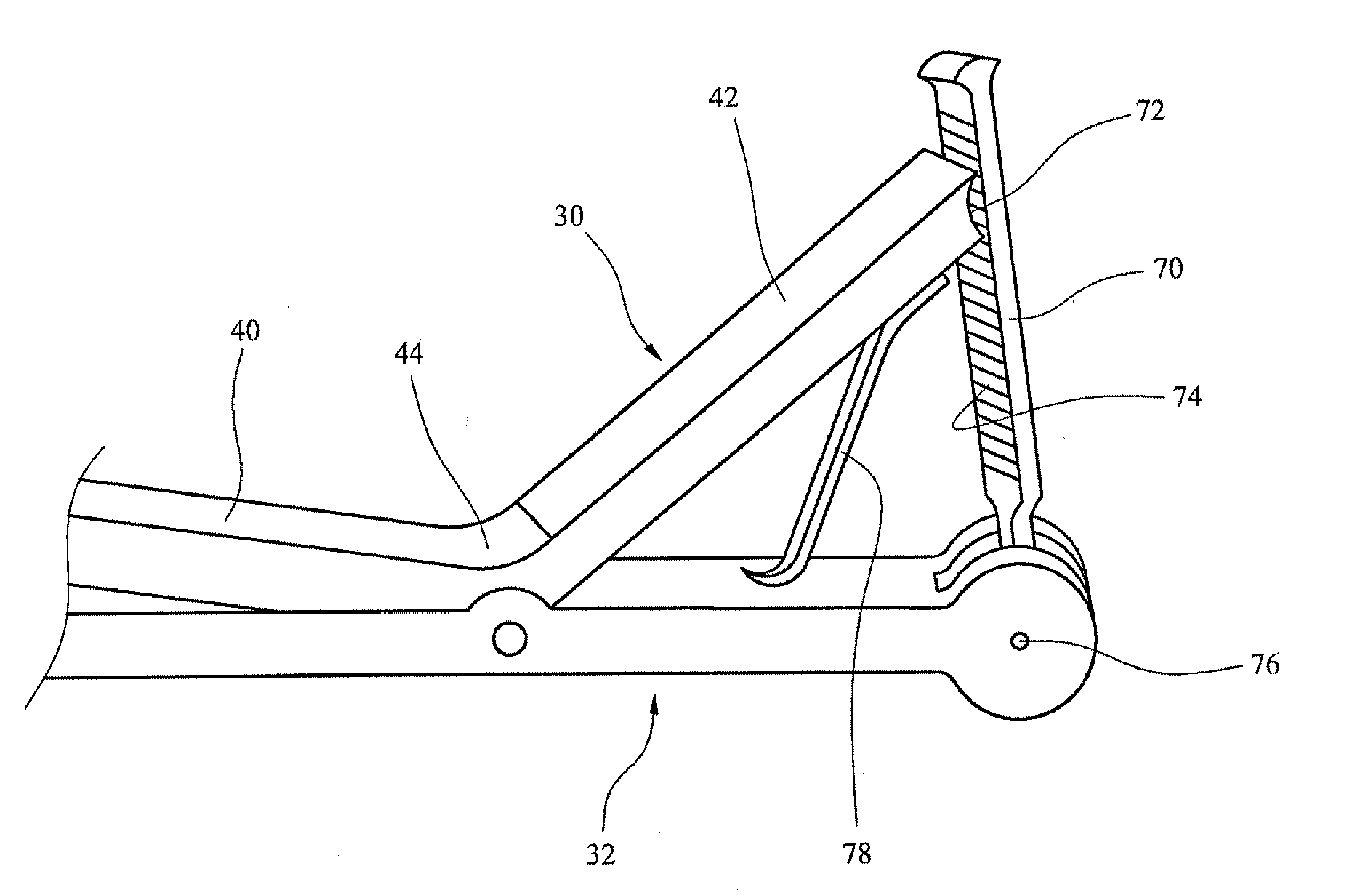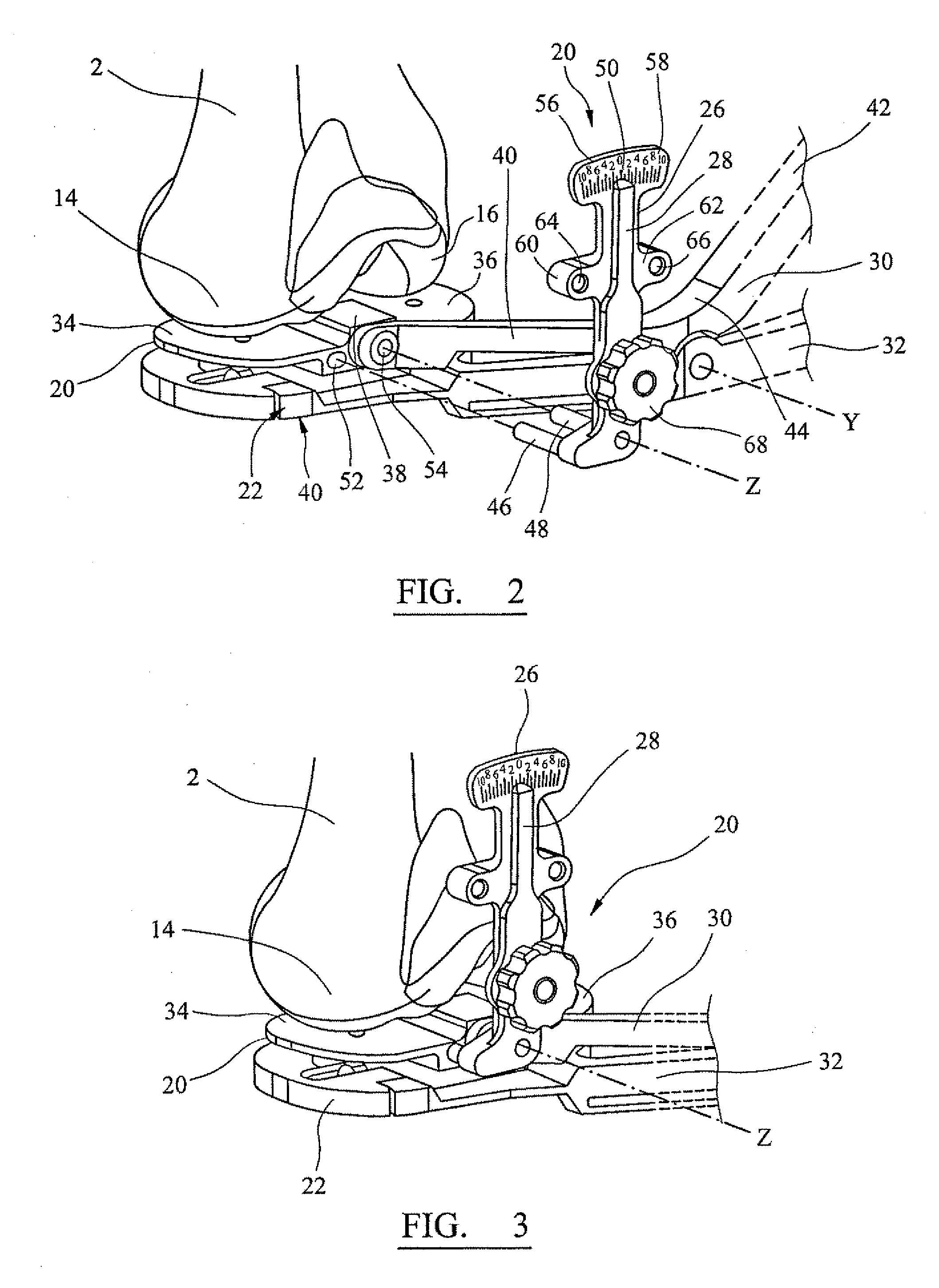Guide Assembly
a technology of guide arms and assembly parts, applied in the field of guide arms, can solve the problems of the need to locate instruments in the intramedullary canal, and achieve the effects of reducing the cost of assembly, easy manufacturing, and increasing the distance between the reference arm and the locator arm
- Summary
- Abstract
- Description
- Claims
- Application Information
AI Technical Summary
Benefits of technology
Problems solved by technology
Method used
Image
Examples
Embodiment Construction
[0034] In the described embodiment the guide assembly of the invention is used to determine the mechanical axis of a femur. Nevertheless, it will be understood that the guide assembly can be used to determine the mechanical axis of other types of bone, such as the humerus.
[0035] Referring to the drawings, FIG. 1 shows a femur 2 having a mechanical axis X. The mechanical axis X of the femur 2 is the line, which extends through the centre point 4 of the head of the femur and the centre point 6 of the intercondylar notch.
[0036] The angle A between the mechanical axis X and a reference axis 12 containing first 8 and second 10 reference points can be determined pre-operatively. In the described embodiment, the first 8 and second 10 reference points are the distal most points of the femurs first 14 and second 16 condyles. Nevertheless, as will be understood, this need not necessarily be the case and the reference points can be any other predetermined reference points on the femur 2. The...
PUM
 Login to View More
Login to View More Abstract
Description
Claims
Application Information
 Login to View More
Login to View More - R&D
- Intellectual Property
- Life Sciences
- Materials
- Tech Scout
- Unparalleled Data Quality
- Higher Quality Content
- 60% Fewer Hallucinations
Browse by: Latest US Patents, China's latest patents, Technical Efficacy Thesaurus, Application Domain, Technology Topic, Popular Technical Reports.
© 2025 PatSnap. All rights reserved.Legal|Privacy policy|Modern Slavery Act Transparency Statement|Sitemap|About US| Contact US: help@patsnap.com



